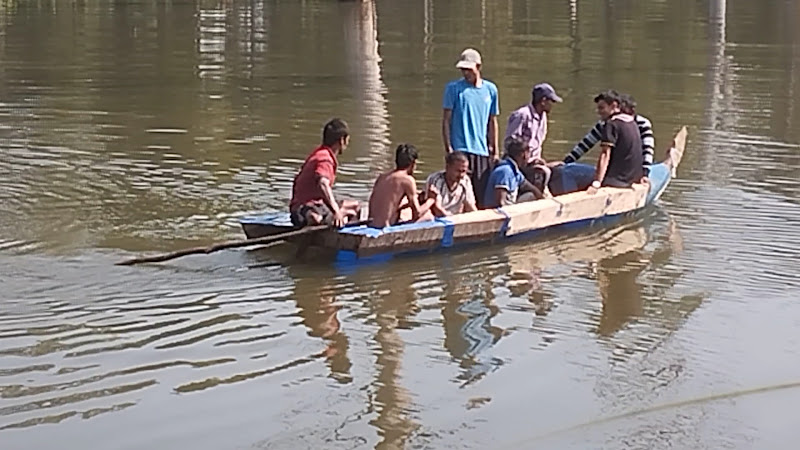

Gube lake - Alpine Lake & Water Recreation
Bansagadhi 21800
Gube lake emerges as a hidden gem in Bansagadhi, Bardiya District, offering visitors a serene natural experience far removed from Nepal's more crowded tourist destinations. This pristine water body nestled in the western Terai region exemplifies the quiet beauty of Nepal's lowland landscapes, where wetland ecosystems support remarkable biodiversity while providing essential ecological services to surrounding agricultural communities.
Unlike the dramatic mountain lakes that dominate Nepal's tourism narrative, Gube lake represents the equally important but often overlooked wetland environments of the Terai plains. The lake serves as a crucial habitat for numerous water bird species, particularly during migration seasons when the Terai becomes a vital stopover point for birds traveling between their breeding grounds in the Himalayas and Tibet and their wintering areas in the Indian subcontinent. Birdwatchers who make the journey to this relatively remote location are often rewarded with sightings of species rarely encountered elsewhere in Nepal.
The lake's ecosystem extends beyond the water itself, incorporating surrounding marsh areas, small patches of riverine forest, and grasslands that together create habitat diversity supporting everything from aquatic insects and fish to amphibians, reptiles, and small mammals. Local communities have traditionally used the lake's resources sustainably for fishing, water buffalo grazing in adjacent areas, and collecting certain aquatic plants used in traditional medicine and local cuisine. This long-standing human-nature relationship has generally worked to the lake's advantage, as local residents maintain a strong interest in the water body's health and productivity.
The exceptional visitor rating of 4.8 stars from 4 reviews, while based on a small sample size, suggests that those who discover Gube lake leave with overwhelmingly positive impressions. Reviewers consistently mention the tranquil atmosphere, the opportunity to experience authentic rural Nepal far from tourist crowds, and the genuine hospitality of local community members who are often surprised and pleased to encounter visitors interested in their local natural heritage.
Access to Gube lake requires some planning, as the site lies off main tourist routes and lacks developed tourism infrastructure. Visitors typically reach the area via Bardiya National Park or the nearby town of Gulariya, requiring local transportation for the final approach. This relative inaccessibility is actually part of the lake's charm for adventure-oriented travelers seeking authentic experiences, though it does mean visitors should be prepared with basic supplies and shouldn't expect commercial tourist facilities at the lake itself.
The best time to visit Gube lake runs from November through March, when cooler, drier weather makes outdoor activities most comfortable and wildlife viewing most productive. The post-monsoon period from October through December is particularly excellent for birdwatching, as migratory species congregate in impressive numbers. Local guides from Bansagadhi can enhance visits significantly by sharing knowledge about the lake's ecology, identifying bird species, explaining traditional uses of the area, and ensuring visitors can navigate to and from the lake safely.
Conservation efforts focused on Gube lake involve collaboration between local communities, district authorities, and environmental organizations working to protect Terai wetlands. Challenges include balancing agricultural water needs with maintaining lake levels, controlling invasive plant species that can disrupt aquatic ecosystems, and managing livestock access to prevent overgrazing and erosion of lake margins. Success in addressing these challenges will determine whether Gube lake continues providing ecological services and nature-based tourism opportunities for future generations.
Park Features & Amenities
🎠 Children
- ✓ Good for kids
Visitor Information
🕐 Best Times to Visit
Spring (Mar-May): Pleasant weather, blooming flowers
Autumn (Sep-Nov): Clear skies, comfortable temperatures
Early Morning: Best for wildlife viewing and photography
🗺️ Getting There
By Car: Bansagadhi 21800
Public Transport: Local buses and taxis available
Walking: Check distance from city center
💡 Visitor Tips
• Bring water and sun protection
• Wear comfortable walking shoes
• Check weather conditions before visiting
• Bring camera for nature photography
Explore More in Nepal
Nearby Attractions
Popular Activities
Ready to Visit Gube lake?
Plan your visit to this amazing destination with our comprehensive travel guide and insider tips.
Seasonal Travel Guide
Weather & Best Time
Winter brings cool temperatures (5-15°C) with clear skies and snow-capped peaks. Perfect for mountain views but cold at higher altitudes.
Best Activities:
- Mountain viewing
- Cultural experiences
- Spa and hot springs
- Photography of snow peaks
- Indoor cultural activities
Travel Tips
- Visit during December-February for snow-capped views
- Pack warm clothing for cold temperatures
- Book hotels with heating facilities
- Plan for shorter daylight hours
Packing Suggestions:
- Warm winter clothing
- Thermal layers
- Warm hat and gloves
- Sturdy winter boots
- Hot water bottle
Quick Facts
Best time: Autumn (Sep-Nov)
Duration: 1-3 days
Difficulty: Easy
Cost: Budget-friendly